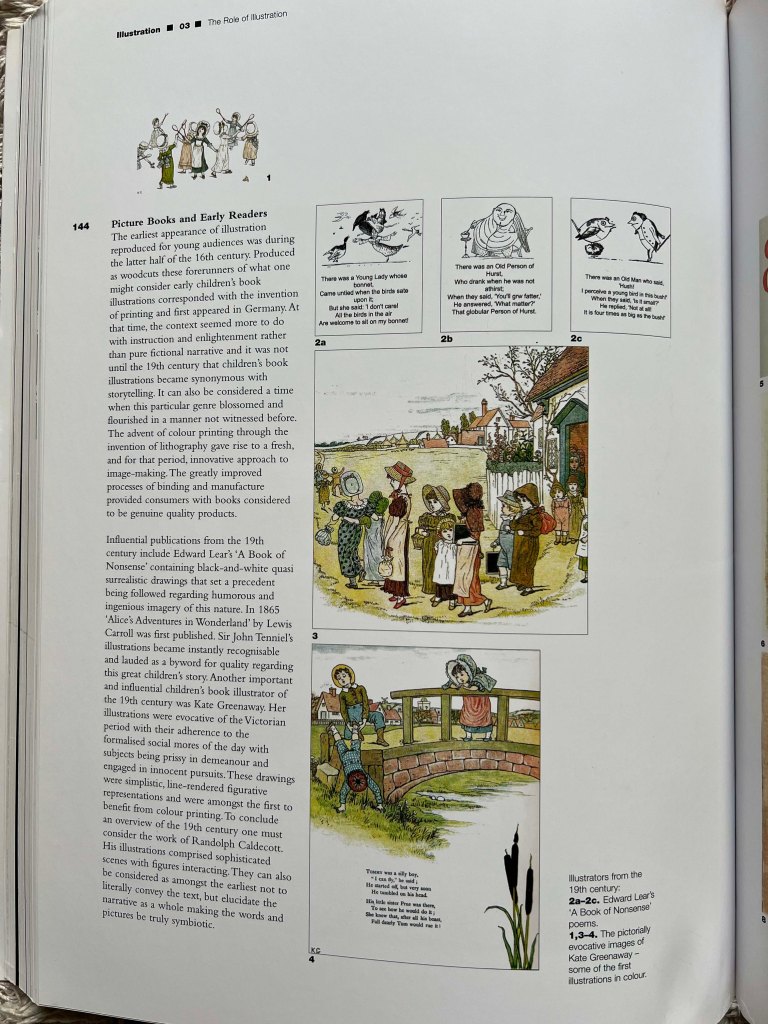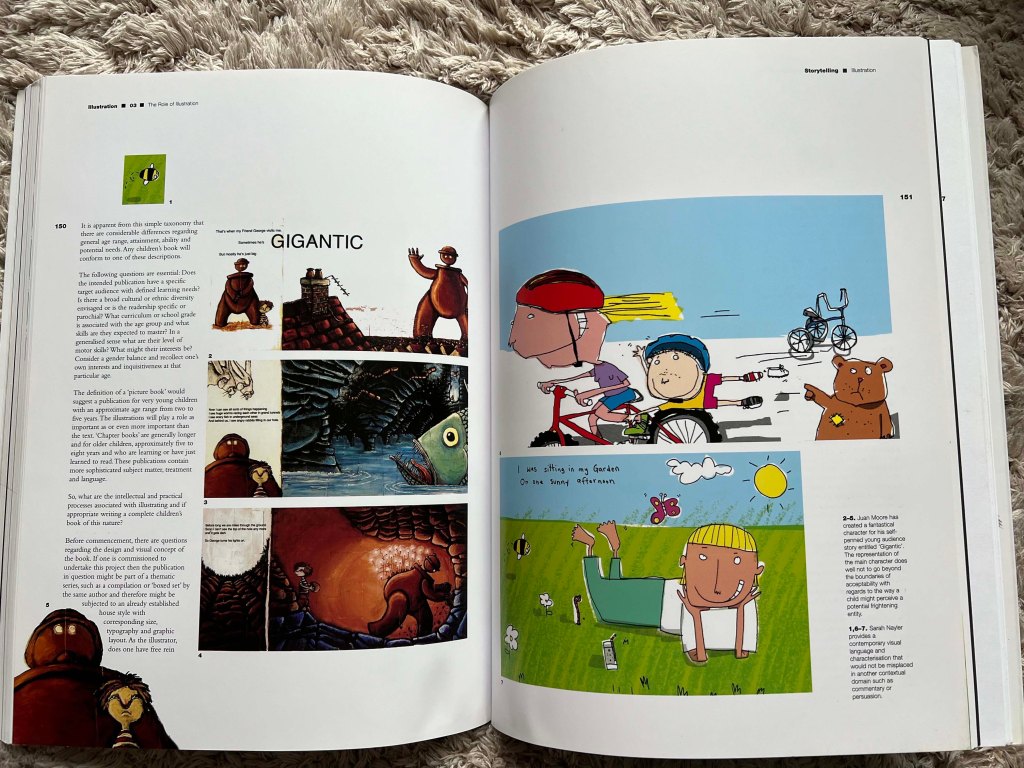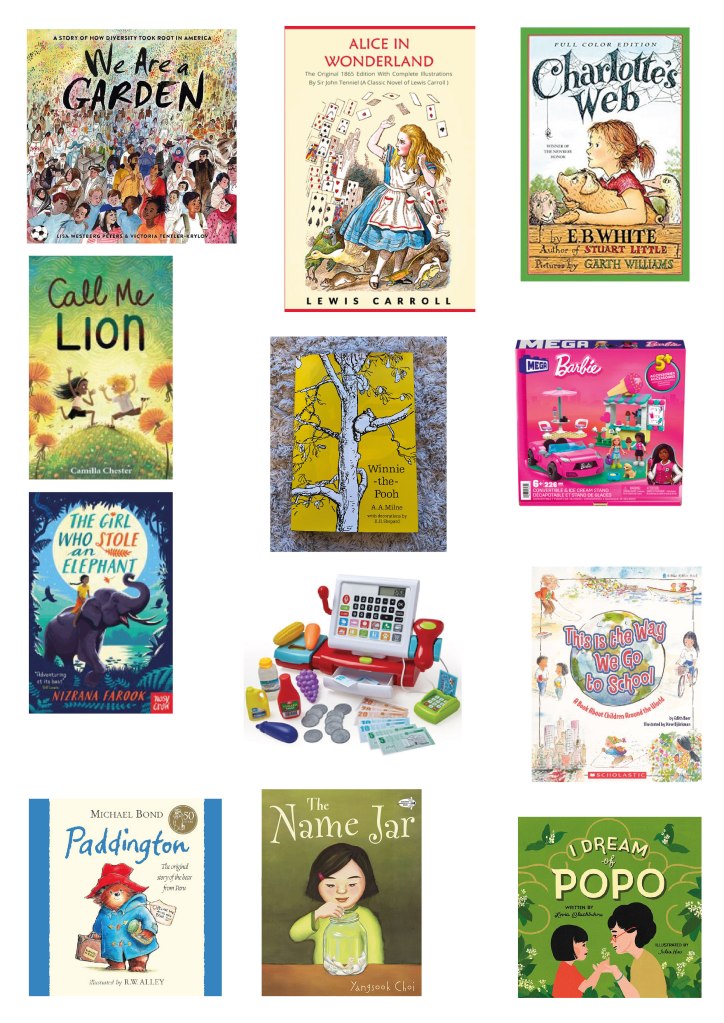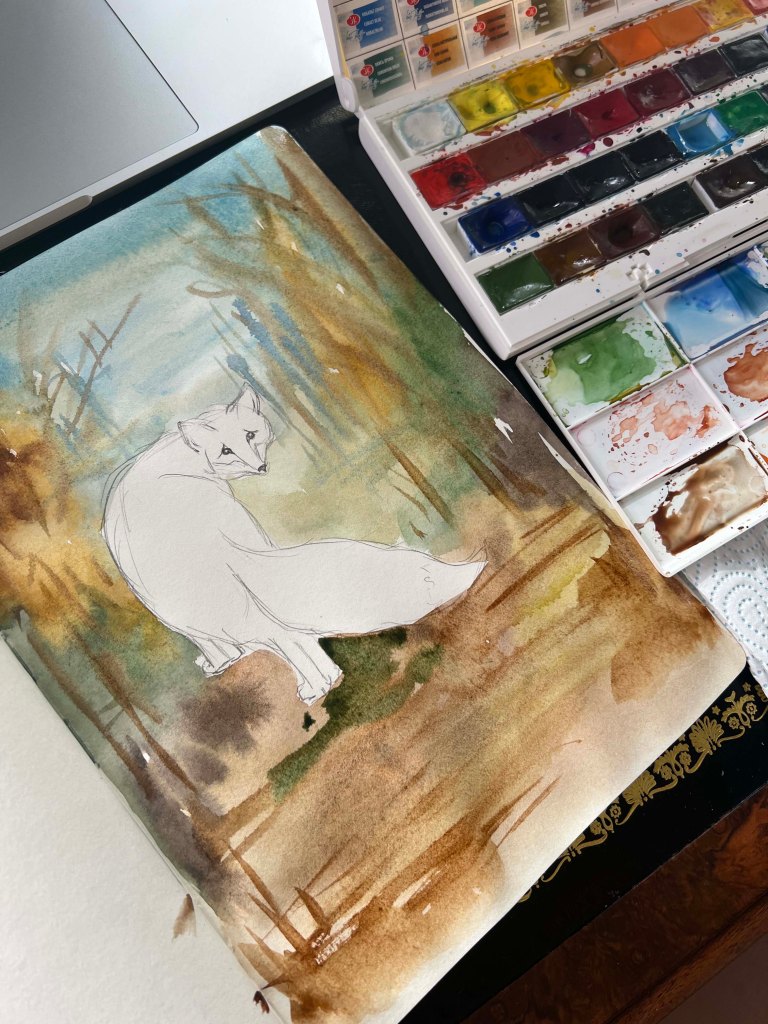
Illustrations for young audiences emerged in the late 16th century as woodcut prints in Germany. Initially focused on instruction, it was not until the 19th century that children’s book illustrations became closely associated with storytelling. The introduction of colour printing via lithography in that era revolutionised image production, leading to high-quality book products for consumers.


Today, young audiences encounter various cultural influences and visual styles, making it impossible to pinpoint a singular trend. Disney-inspired content still remains popular for its light-hearted entertainment value, contrasting with the deeper and more sensitive European approach found in works inspired by Hans Christian Andersen. Illustrators, especially those from Eastern Europe, explore themes of human suffering and desire with sensitivity and subtlety, prioritising the audience’s needs.

Understanding the distinct age groups and associated publication types is essential for creating meaningful and engaging content for children.
Six months to two years: interactive books such as floating bath and board, ‘shape’ books all with simple text, adult narrated.
Two years to five years: picture books, ‘pop-ups’ and novelties with early reader text.
Five years to eight years: chapter books – picture books of a more sophisticated nature with the associated text.
Eight years to twelve years: first novels.
Twelve years +: young adult material.
Picture books, intended for children aged two to five, prioritise illustrations over text.
Chapter books, aimed at older children (around five to eight years old), feature more complex subject matter, treatment, and language suitable for emerging readers.
Creating appealing characters is crucial, avoiding overly threatening features like distorted facial elements. Attention to detail in the eyes, nose, and mouth is key. Characterising animals in children’s books follows a similar process, emphasising visual development and the diversity of species within the narrative.

When I read this exercise, I felt excited and overwhelmed at the same time. I love working with kids’ materials at the moment, that is something I am personally interested in, there is so much I’ve learnt about books for kids, especially pre-readers and pre-schoolers. The variety of available books and developmental toys for children is impressive. Exploring these resources feels like a joyful learning experience, especially with my one-year-old daughter. The bright and diverse illustrations, along with engaging topics like bravery and curiosity, friendship, and love for nature and animals, captivate even the youngest readers. Although we haven’t reached the age range of some of the books with my daughter yet, I’m sure it won’t take me long to do general research on them.
Pre-reader
This is an age range where I feel most confident, having spent the last year researching materials for babies and toddlers extensively. The impressive variety reflects high standards in children’s books and toys. Many companies strive to be competitive by offering enlightening materials for even the youngest children and environmentally friendly and healthy toys made from eco-friendly wood and recyclable packaging. I discovered the importance of introducing black-and-white images to babies, stimulating brain development and supporting future reading skills. There is a subtle distinction between educational materials for babies and those for pre-schoolers. I have already read numerous toddler books to my daughter, and she enjoys repeating them after me and pretending to read them herself.

Next age groups, I created using an internet search, as most of the books I had were up to 3-5-year-old kids. Below, I left sources I used for my research.
Pre-school (3–5)
Pre-school books are specifically designed to cater to the developmental needs and interests of children aged 3 to 5. These books typically focus on simple and engaging stories, colourful illustrations, and age-appropriate themes that resonate with preschoolers. Pre-school books may also introduce basic learning concepts such as numbers, colours, shapes, and letters in a fun and engaging manner.

Early reader (5-7)
Books for early readers, typically targeted at children aged 5 to 7 who are starting to read independently, are specifically designed to support and encourage young readers in their literacy journey. These books feature simple language, repetitive text, and engaging illustrations to help build reading skills and confidence.

Established readers (7–9) and Older age groups
Books for established readers and older age groups, such as middle-grade readers and young adults, are characterised by more complex storylines and diverse themes, to stimulate older readers’ cognitive and emotional development. These books often feature deeper explorations of topics, intricate plot twists, and rich character development to engage and challenge readers.

Sources:
Mind map
The following task required selecting two age groups and brainstorming keywords to identify themes and visuals relevant to children within that group. Then I had to choose an animal appropriate for each age group and brainstorm to identify themes, images and ideas relevant to the age groups.
For my first illustration, I chose the pre-reader group to analyse the words ‘family’ and ‘growing’. I chose those subjects for the pre-reader category because these words are highly relevant to a child’s early development and experiences. ‘Family’ carries significant emotional weight and plays a crucial role in a child’s life, shaping their sense of belonging and security. ‘Growing’ reflects the constant physical, emotional, and cognitive development that toddlers go through as they transition from infancy to childhood.

My chosen word is ‘family’, where I wanted to illustrate the bond and connection between a parent and baby. I thought I could use some animals that show affection in real life, such as bears, or panda bears, known for being cute and cuddly. Also, elephants, penguins, rabbits, or lions. I thought that for small kids, the choice of animals can still be quite broad. However, from my daughter’s development at her age, I see that she mainly recognises pets like cats and dogs, as well as all the soft toy animals that she can cuddle, such as a bunny, monkey, or bear.
Those were animals of my choice. Bears are often associated with being nurturing and protective, making them a good choice to represent family bonds. Elephants are known for their strong family connections and care for their young, making them a heartwarming symbol of family unity. Bunnies are commonly used in children’s illustrations and can represent closeness and love within a family. There is a great choice of animals, but the main task is to depict them in action, which is not as easy when you think about it. It took me a while to make the final choice for the first chosen group, I was going for three different animals one after another, but then I thought that depicting a koala bear for the theme family was my best choice.
Sketches for pre-reader
Using a koala bear for a pre-reader illustration focused on the theme of the family is quite a charming choice. Koalas are known for their cuddly and affectionate nature, making them a perfect representation of warmth and closeness within a family.

I started to make some sketches of koalas cuddling her baby on the tree. That is what they usually do, cuddling their little koalas and eating the leaves of eucalyptus. I had in mind the idea of creating an illustration for a bedtime story. I thought that looking at animals cuddling their babies creates a good association of safety and security for little pre-readers.


In terms of media, I chose gouache paints as I wanted illustrations to be brighter. The style of illustration and colours is created in a cartoony, fairytale style to be more approachable for young children. Also, I added wording in the cloud, with the words love and care from the koala bear to her baby.

Using the research on typography from the previous exercise, I created some variations of fonts for the koala mum. For the goodnight message to the baby koala, I used Astounder Squared BB font and Supernett Cn, adding bold words to the sentences. I was going to add a line around my sketch, but then I thought that the illustration looked quite bright and prominent, as it was done in gouache paints. Additionally, I added the night sky after I completed the design, as I thought that if we were talking about nighttime, it would make sense to colour the background in ultramarine, which added a nice contrast to the illustration.

Night sky version

Early reader
For the second illustration, I selected an early reader group of children aged around 5-7 years old, focusing on more serious topics like feelings of being ‘scared’ and ‘sad’. I believe that at this age, children are exposed to deeper emotions and it is valuable to gently remind them that it is okay to feel sad or scared, emphasising the importance of discussing these feelings openly and timely.


For an animal, I chose a forest animal a fox. Foxes are often viewed as cheeky animals for stealing chickens from the farm, however, as children grow, their understanding of nature can become more varied.
Like many wild animals, foxes can experience fear for various reasons. In their natural habitat, foxes may feel scared due to potential threats, such as predators like wolves or large birds of prey. Choosing a scared fox character for an early reader group allows young readers to connect with relatable emotions, learn about courage and resilience, and witness character development. The scared fox can evoke empathy as it faces fear in a new environment, encounters threats, or feels insecure, showing a valuable lesson in overcoming challenges and finding bravery in the face of fear.



For the media, I chose watercolour as I wanted the image to look mature and more realistic. To convey the impression of fear, I used a more sorrowful expression for the fox, as foxes often appear aggressive and defensive when scared, which wouldn’t suit my audience. The idea was to depict a fox walking through a dark, unfamiliar forest, looking back in insecurity but with the message to reach a destination where safety lies, overcoming fear to grow and learn from the experience.
I quite liked how dark and moody the forest looked compared with the warm ginger colour of the fox. It created a beautiful contrast for the illustration, as my audience is still quite young, children aged from 5 to 7, the fox looks realistic, and I think it can create empathy for nature and feel of connection to natural life. For the typography, I chose a serif font from Adobe Family Mrs Eaves, which is meant to be good for reading for the young audience and it has a good gap between sentences.




Final illustrations

Are the target age brackets for children really as clear-cut as we’ve made them here?
After completing this exercise I would say that target age brackets for children are not always definitive. Every child learns at their own pace, and these age categories may not account for learning difficulties or unique challenges that can impact their reading skills, visual comprehension, interests, and preferred illustration styles. Children are unique individuals with diverse interests and abilities, transcending strict age limitations. Some children at a certain age prefer bright easy-to-read books, and some children go for more advanced reading, especially if reading is their main hobby, they can read one book after another, skipping such criteria as bright images or bigger and less text.
How did the function of image and text differ within the different age groupings?
When children are young they process the information through bright images and colours due to their limited reading skills. They perceive words not as a whole piece, but mainly like a puzzle that needs to join together. This is why, for younger age groups, the text is short and bold, with pictures taking precedence. Over time the role of text and images change, and text gains a significant role in gathering information, as it encourages and challenges them to engage with more complex language, improving their reading skills. As children become advanced readers, their reliance on images diminishes, and they rely more on their imagination. Books with vibrant illustrations may be viewed more as special gift editions.
What is your response to the idea that ‘all children’s illustration has bright colours’?
I don’t think that all children’s illustrations have bright colours, I saw plenty of examples when illustrators used a calm colour palette, for example, the series of Peter Rabbit books, but for smaller children’s books colours are definitely opaque, as children’s eye vision is developing for quite long time. When a baby is born everything is blurry, and contrast books are the best choice for them, but each month more and more colours appear in their vision palette. From my daughter’s experience, I could say that she would rather look through brighter books, with additional texture in them, like a velvety nose, rough feet or tufty tail. But over time colour palettes for children’s books became more complex, and some mature colours appeared to them.
Little bonus
